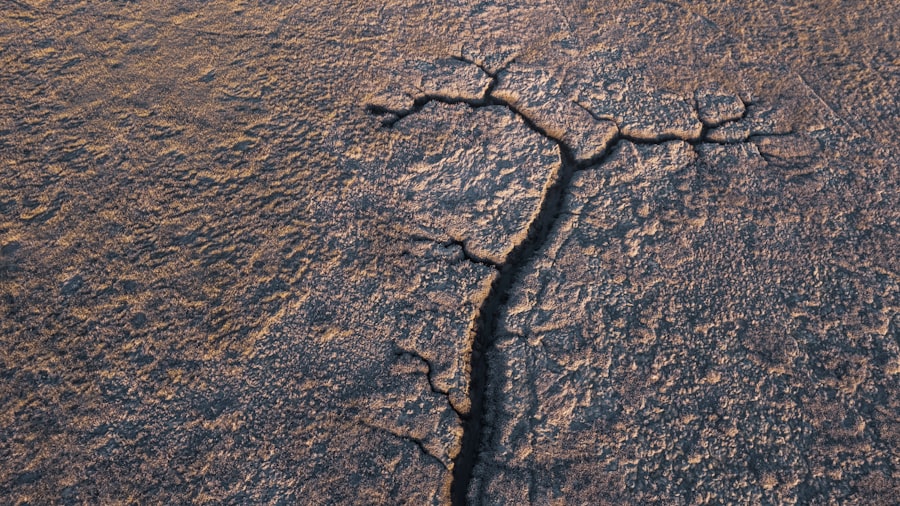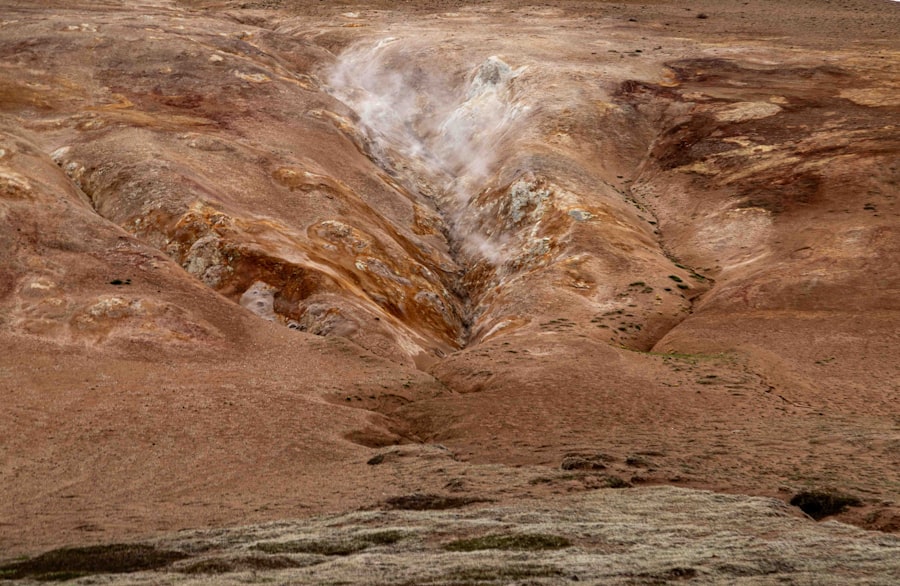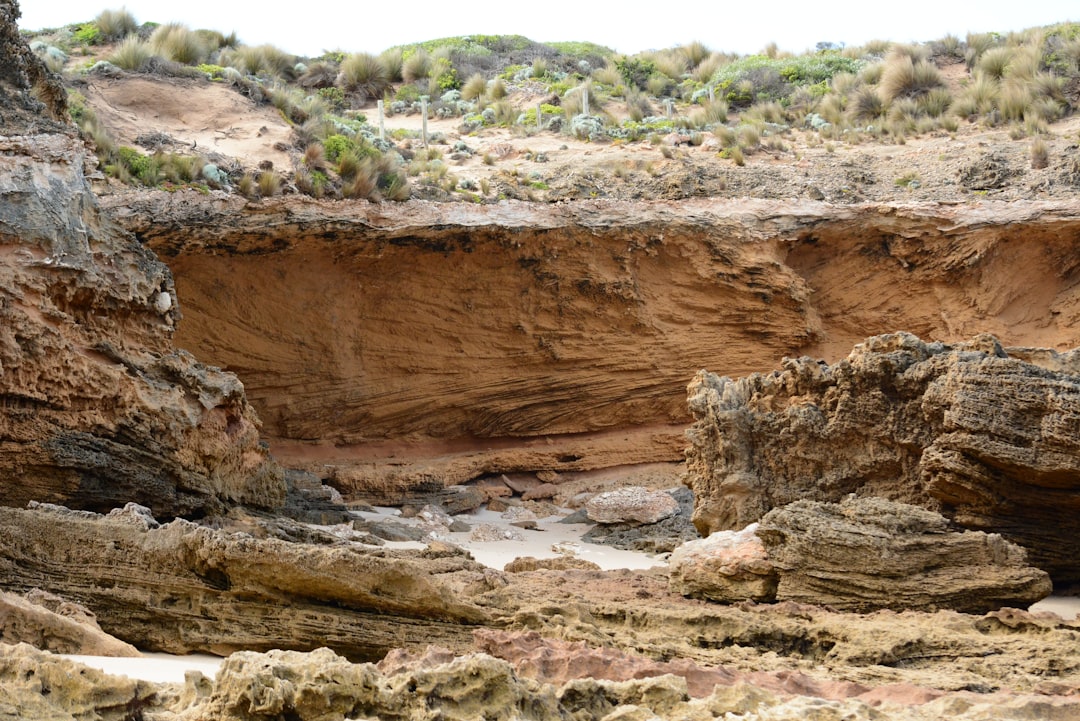Geological violence refers to the natural phenomena that result from the dynamic processes of the Earth, often manifesting in the form of earthquakes, volcanic eruptions, landslides, and tsunamis. These events are driven by the movement of tectonic plates, volcanic activity, and other geological forces that can lead to sudden and catastrophic changes in the environment. The term encapsulates not only the physical destruction caused by these events but also the broader implications for ecosystems and human societies.
Understanding geological violence requires a multidisciplinary approach, incorporating geology, seismology, and environmental science to grasp the underlying mechanisms and potential consequences. The study of geological violence is crucial for several reasons. First, it helps scientists identify patterns and predict future events, which can be vital for disaster preparedness.
Second, it sheds light on the resilience of various ecosystems and human infrastructures in the face of such natural disasters. By examining historical data and current geological activity, researchers can develop models that illustrate how these violent events occur and their potential impact on both local and global scales. This understanding is essential for mitigating risks and enhancing safety measures in vulnerable regions.
Key Takeaways
- Geological violence refers to the natural processes and events that can cause destruction and harm to human communities.
- The impact of geological violence on human communities can be devastating, leading to loss of life, displacement, and economic hardship.
- Historical examples of geological violence, such as earthquakes and volcanic eruptions, serve as reminders of the destructive power of the Earth’s forces.
- Predicting and monitoring geological events is crucial for early warning and preparedness, helping to mitigate the impact on human communities.
- Engineering solutions, government policies, community preparedness, and international collaboration are essential in defending against geological violence and reducing its impact on human communities.
The Impact of Geological Violence on Human Communities
The impact of geological violence on human communities can be profound and far-reaching. When a significant geological event occurs, it can lead to loss of life, destruction of property, and long-term economic disruption.
The immediate aftermath often sees communities grappling with the chaos of rescue operations, medical emergencies, and the urgent need for shelter and resources. Beyond the immediate physical damage, geological violence can have lasting psychological effects on affected populations. Survivors may experience trauma, anxiety, and a sense of loss that can persist for years.
The disruption of social networks and community cohesion can further exacerbate these issues, leading to long-term challenges in recovery and rebuilding. Additionally, the economic ramifications can be severe; businesses may close, jobs may be lost, and local economies can take years to recover from the shock of a geological disaster. Thus, understanding the multifaceted impact of geological violence is essential for developing effective response strategies.
Historical Examples of Geological Violence

Throughout history, numerous examples of geological violence have left indelible marks on human civilization. One of the most notable instances is the 1906 San Francisco earthquake, which registered a magnitude of 7.9 and resulted in widespread destruction across the city. The earthquake triggered fires that ravaged neighborhoods, leading to an estimated 3,000 deaths and displacing over 200,000 residents.
This event not only reshaped the physical landscape but also prompted significant changes in building codes and urban planning practices aimed at enhancing earthquake resilience. Another significant example is the eruption of Mount Vesuvius in 79 AD, which famously buried the Roman cities of Pompeii and Herculaneum under volcanic ash. This catastrophic event preserved a snapshot of Roman life but also serves as a stark reminder of nature’s power to obliterate human settlements in an instant.
The lessons learned from such historical events continue to inform modern disaster preparedness efforts and highlight the importance of understanding geological processes to mitigate future risks.
Predicting and Monitoring Geological Events
| Geological Event | Prediction Method | Monitoring Technique |
|---|---|---|
| Earthquakes | Seismic activity analysis | Seismometers and GPS |
| Volcanic Eruptions | Gas emissions and ground deformation | Remote sensing and tiltmeters |
| Landslides | Topographic mapping and rainfall analysis | Ground-based and satellite monitoring |
Predicting and monitoring geological events is a complex endeavor that combines advanced technology with scientific research. Seismologists utilize a network of seismometers to detect ground movements and analyze seismic waves generated by earthquakes. These instruments provide real-time data that can help scientists assess the likelihood of an impending earthquake and issue warnings when necessary.
However, despite significant advancements in technology, accurately predicting the exact timing and location of earthquakes remains a challenge. In addition to seismic monitoring, researchers employ various methods to study volcanic activity. Techniques such as satellite imagery, gas emissions analysis, and ground deformation measurements allow scientists to monitor changes in volcanoes that may indicate an impending eruption.
By integrating data from multiple sources, researchers can develop comprehensive models that enhance understanding and improve forecasting capabilities. While predicting geological events with precision is still an ongoing challenge, advancements in technology continue to improve monitoring efforts and provide valuable insights into these natural phenomena.
Engineering Solutions for Mitigating Geological Violence
Engineering solutions play a critical role in mitigating the effects of geological violence on human communities. Structural engineering advancements have led to the development of buildings designed to withstand seismic forces, such as base isolation systems that allow structures to move independently from ground motion during an earthquake. These innovations have been instrumental in reducing damage and saving lives in earthquake-prone regions.
In addition to structural improvements, land-use planning is another essential aspect of mitigating geological violence. By avoiding construction in high-risk areas such as floodplains or near active fault lines, communities can reduce their vulnerability to natural disasters. Furthermore, implementing early warning systems for tsunamis or landslides can provide crucial time for evacuation and preparedness measures.
These engineering solutions not only enhance safety but also contribute to building resilient communities capable of withstanding geological challenges.
The Role of Government and Policy in Defending Against Geological Violence

Governments play a pivotal role in defending against geological violence through policy development and resource allocation. Effective disaster management policies are essential for ensuring that communities are prepared for potential geological events. This includes establishing building codes that require earthquake-resistant designs, funding research initiatives aimed at improving prediction technologies, and investing in public education campaigns about disaster preparedness.
Moreover, government agencies must coordinate with local organizations and communities to create comprehensive emergency response plans. These plans should outline clear protocols for evacuation, communication, and resource distribution during a geological crisis. By fostering collaboration between various stakeholders—such as scientists, engineers, emergency responders, and community leaders—governments can enhance their capacity to respond effectively to geological violence and minimize its impact on human populations.
Community Preparedness and Response to Geological Events
Community preparedness is a vital component in mitigating the effects of geological violence. Local organizations play a crucial role in educating residents about potential risks and encouraging proactive measures such as creating emergency kits or developing family communication plans. Community drills simulating geological events can also help residents practice their response strategies, fostering a culture of preparedness that can save lives during an actual disaster.
In addition to individual preparedness efforts, community resilience relies on strong social networks that enable effective response during crises. Neighbors who know each other are more likely to assist one another during emergencies, whether by providing shelter or sharing resources. Building these connections before a disaster strikes can significantly enhance a community’s ability to recover from geological violence.
The Importance of Education and Awareness in Geological Safety
Education and awareness are fundamental in promoting geological safety within communities at risk of natural disasters. Schools play a critical role in this process by incorporating geology and disaster preparedness into their curricula. By teaching students about the causes and effects of geological violence, educators can empower future generations with knowledge that may one day save lives.
Public awareness campaigns are equally important in reaching broader audiences beyond educational institutions. These campaigns can utilize various media platforms to disseminate information about safety protocols during geological events, such as how to “Drop, Cover, and Hold On” during an earthquake or recognizing warning signs of an impending volcanic eruption. By fostering a culture of awareness around geological safety, communities can better equip themselves to face potential threats.
International Collaboration in Addressing Geological Violence
International collaboration is essential in addressing the challenges posed by geological violence on a global scale. Many countries share similar vulnerabilities to natural disasters; therefore, sharing knowledge, resources, and best practices can enhance collective resilience. Organizations such as the United Nations Office for Disaster Risk Reduction (UNDRR) facilitate international cooperation by promoting frameworks for disaster risk reduction and encouraging countries to adopt comprehensive disaster management strategies.
Furthermore, collaborative research initiatives allow scientists from different nations to pool their expertise in studying geological phenomena. By working together on projects that monitor seismic activity or assess volcanic hazards, researchers can develop more accurate predictive models that benefit all nations involved. This spirit of collaboration not only strengthens individual countries’ capacities but also fosters a sense of global solidarity in facing nature’s challenges.
Ethical Considerations in Defending Against Geological Violence
As societies strive to defend against geological violence, ethical considerations must guide decision-making processes. One significant concern is ensuring equitable access to resources for disaster preparedness and recovery efforts. Vulnerable populations often bear the brunt of natural disasters due to inadequate infrastructure or limited access to information; therefore, policies must prioritize inclusivity to ensure that all community members are equipped to respond effectively.
Striking a balance between human safety and ecological preservation is crucial; for instance, constructing barriers against tsunamis may protect communities but could disrupt local ecosystems. Engaging diverse stakeholders—including environmentalists—can help ensure that ethical considerations are integrated into disaster management strategies.
The Future of Defending Against Earth’s Fury
Looking ahead, the future of defending against geological violence will likely be shaped by advancements in technology and an increased emphasis on sustainability. Innovations such as artificial intelligence may enhance predictive capabilities by analyzing vast datasets related to geological activity more efficiently than ever before. Additionally, integrating sustainable practices into engineering solutions will be essential for minimizing environmental impacts while enhancing community resilience.
Moreover, fostering a culture of preparedness through education will remain paramount as societies adapt to changing environmental conditions influenced by climate change. As communities become more aware of their vulnerabilities and proactive in their responses, they will be better equipped to face the challenges posed by geological violence in the years to come. Ultimately, a collaborative approach—encompassing governments, scientists, engineers, communities, and international organizations—will be vital in building a safer future amid Earth’s fury.
Geological violence, a term often used to describe the dramatic and sometimes catastrophic natural events that shape our planet, is a crucial concept in understanding Earth’s dynamic systems. These events, such as earthquakes, volcanic eruptions, and tsunamis, not only alter landscapes but also pose significant challenges to human societies. An insightful article that delves into the intricacies of geological violence and its implications for defense strategies can be found on MyGeoQuest. This article explores how understanding geological processes can aid in developing better preparedness and response mechanisms. For more detailed information, you can read the full article here.
WATCH THIS! The Hidden Reason No One Can Invade America | A Geographical Analysis
FAQs
What is the concept of geological violence in defense?
The concept of geological violence in defense refers to the use of natural geological features, such as mountains, rivers, or other terrain, as a means of defense in military strategy.
How has geological violence been used in history?
Geological violence has been used throughout history in various military conflicts, with examples including the use of mountain ranges as natural barriers and the strategic positioning of troops along rivers or other natural obstacles.
What are some examples of geological violence in defense?
Examples of geological violence in defense include the use of the Himalayan mountain range as a natural barrier in the defense of India, and the strategic positioning of troops along the Rhine River in Europe.
How does geological violence impact military strategy?
Geological violence can impact military strategy by influencing the positioning of troops, the movement of forces, and the overall defense or offense of a particular area. It can also impact the choice of tactics and the allocation of resources in a military campaign.
What are the implications of geological violence in defense for modern warfare?
In modern warfare, the concept of geological violence in defense continues to be relevant, as natural terrain features still play a significant role in military strategy. Understanding and leveraging geological features can provide a strategic advantage in military operations.
